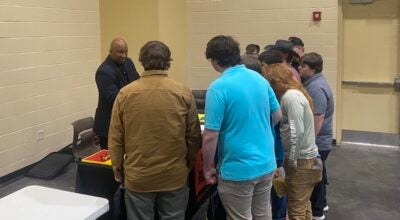City must find source of wastewater contaminants
Published 4:01 pm Wednesday, January 30, 2013
Clanton city officials have a year to correct a problem of copper and nickel entering the city’s wastewater treatment system.
The city’s wastewater treatment plant isn’t equipped to handle copper and nickel, which are industrial byproducts.
“It’s not ordinary household waste; it’s industrial waste,” Clanton Mayor Billy Joe Driver said.
Presence of the contaminants over a certain level is a violation of federal guidelines, and a failure to correct the problem could result in fines.
An instrument that can be attached to discharge lines at various businesses to test for the contaminants has been ordered and could arrive some time in February, Driver said.
The instrument would take measurements each hour over a 24-hour period.
Driver and wastewater treatment plant Supervisor Anthony Kelley said such contaminants would usually be diluted by the time they reach the plant.
“We believe it’s one of our industries real close to the plant, because it probably just hasn’t had time to dilute,” Kelley said.
The level of copper and nickel in the city’s wastewater hasn’t exceeded the allowable level every month. The limit is 0.076 milligrams per liter, and the January level was 0.069 milligrams per liter, for example.
But the recorded level was over the limit some months in 2012.
The situation has been reported to the Alabama Department of Environmental Management, Driver said. The state set the deadline for the city to correct the problem.
The mysterious contaminants is just one of several recent issues with the city’s wastewater treatment.
A sewer spill was found Tuesday at Southeastern Anodizing Company on Keystone Drive, Driver said.
The spill was reported to ADEM but was fixed for the most part, Driver said and added that Wednesday’s stormy weather hampered efforts to completely resolve the issue.
In recent years, the city has also had to install a generator to power the plant in case of an electrical outage, build new above-ground storage tanks and clean the soil around old in-ground tanks, among other projects.






